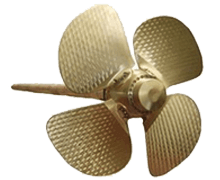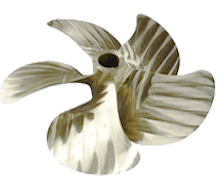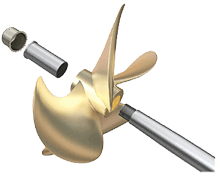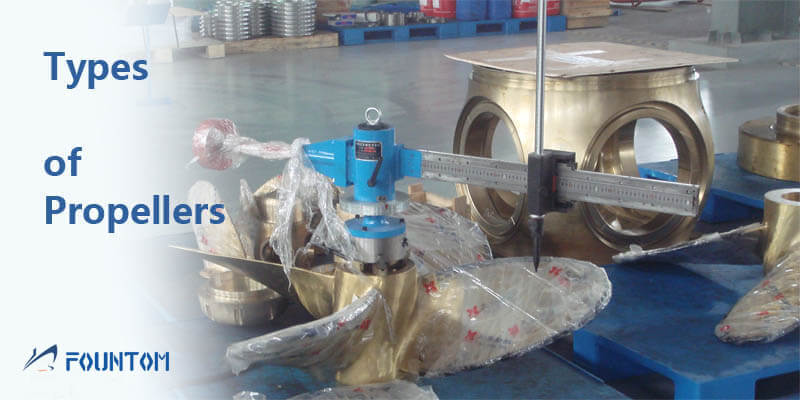Propellers are the most common propulsor for vessels, each vessel has one or two propellers. Here Fountom classifies the marine propellers by structure, number of blades and installation forms.
Marine propeller types classified by structure:

The pitch value is fixed. FPP is widely used on ships for its charaters of simple structure, lightweight, cost-effective and easy maintenance.

The pitch can be varied hydraulically or electrically, the power can be used more efficiently by adjusting propeller pitch angle, high pitch for high vessel speed, and low pitch for low vessel speed.
Propeller types classified by number of blades:
 A propeller can have 2, 3, 4 or even more blades. Generally the more blades it has, the better power efficient the propeller is.
A propeller can have 2, 3, 4 or even more blades. Generally the more blades it has, the better power efficient the propeller is.
Propellers can also be classified by installation methods:

- Standard on-shaft propeller
In most cases, the fixed pitch propeller and controllable pitch propellers can be installed on tail shaft.

- Ducted propeller
Ducted propeller, also known as kort nozzle or nozzle propeller, is to install the propeller in a round nozzle. Ducted propeller makes the propeller more power efficient, the nozzle was designed to be hydrodynamic. Water flow is fast and cause low pressure on inner surface, slow and high pressure on outer surface, which produces extra thrust to the nozzle in motion.

- Contra-Rotating Propellers
Contra-Rotating Propellers, also referred to as coaxial contra-rotating propellers, is to install two propellers facing each other but on the same propeller shaft. The two propellers of contra-propellers will rotate in opposite directions to save flow loss, which makes the propulsor better effective. As the contra rotating propellers is complicated in structure, it is not widely used on large tonnage vessels.




